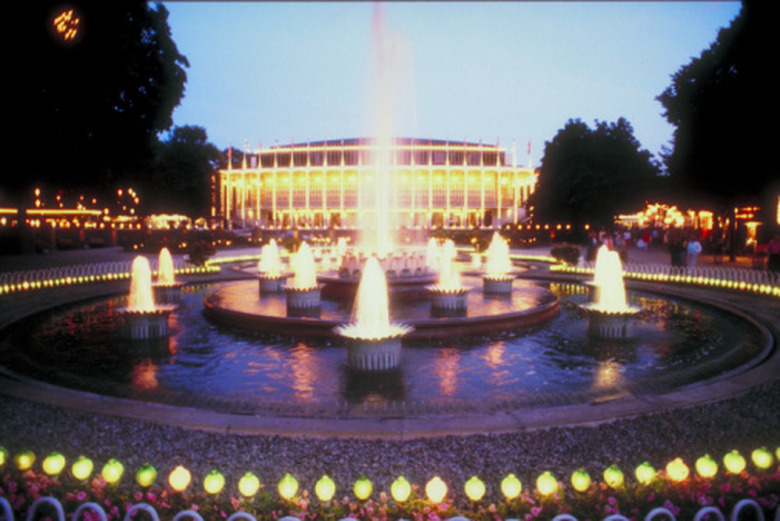How To Get Colored Water For Fountains
Fountains are a lovely addition to the landscape. Ranging from abstract, modern shapes to timeless Greek gods, the water fountain presents a well-loved position in any appointed landscape. Some fountains provide a water resource for animals and birds; others grow aquatic plants and support whole ecosystems. One way to transform the appearance of a fountain quickly is to alter the color of its water.
Step 1
Determine the water volume of your pond, water feature or fountain. Calculate the water area (length times width times depth).
Step 2
Select a pool or fountain dye suitable for your application. Pool dyes range in color and in function. Most dyes are blue, blue-green or black.
- Fountains are a lovely addition to the landscape.
- Select a pool or fountain dye suitable for your application.
Step 3
Measure the correct amount of dye for your fountain, and pour the dye as close to the fountain aerator as possible. Dyes will not discolor fish or your skin. A large pond or water feature may take as much as two hours to completely change color. Small fountains will change water color almost immediately.
Water Fountains
Several wall-mounted fountains, including the classic lion's head, require a small pipe to feed water through the back and into the lion's mouth. Wall fountains need to be built into the wall if you want the fountain components hidden, or these components can be camouflaged behind plants and rock work. Geyser jet fountains are designed to suck in air and mix it with the water to produce a vigorous column of foaming, frothy water which, with an appropriate pump and nozzle, can reach several feet high. The trick to building a geyser fountain is having a basin or container below it that is large enough to contain the water, preventing spill-over into the ground beneath it. If running electricity to your fountain site is more of a challenge than you anticipated, consider a solar-powered fountain. You can also supplement your fountain with solar-powered lighting which can make a small water element look larger. You can buy solar-powered bubbler, spray and splash fountains kits at most large garden centers.
- Measure the correct amount of dye for your fountain, and pour the dye as close to the fountain aerator as possible.
- Wall fountains need to be built into the wall if you want the fountain components hidden, or these components can be camouflaged behind plants and rock work.
Things Needed
- Fountain
- Measuring cup
- Pool and fountain dye
Tip
Most pool dyes are designed for large bodies of water, so it only takes a small amount to change the color of a small fountain. This change in color can last up to four months.
